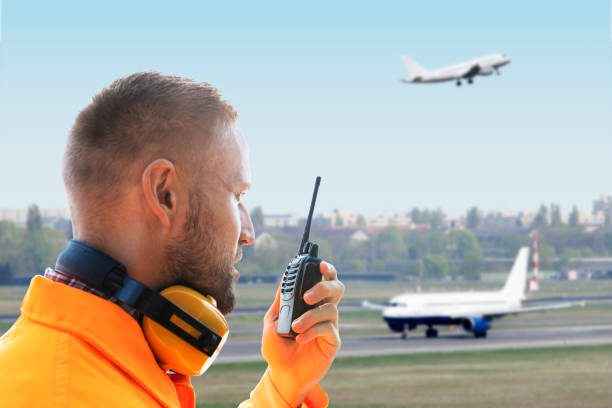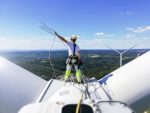
| Avionics Technician Key Stats | |
|---|---|
| Education | 4+ Years |
| Job Outlook | 6% |
Avionics Technicians are the mechanics of aircraft and are responsible for making sure airplanes are ready for takeoff on time.
Their role is extremely important because it focuses on maintaining and servicing military or commercial airplanes.
The millions of people who travel by plane may not realize that they would not be able to get to their destinations without the specialized work of an Avionics Technician.
These specialists are not visible like pilots and flight attendants, but their work is just as necessary for the travel industry; they make it possible for millions of people to travel safely from point A to point B.
They are skilled in many ways: they work well with their hands, are good in mathematics and can work under pressure fixing aircraft under limited time constraints.
Table of Contents
Education Requirements to Become an Avionics Technician
Someone who wants to become an Avionics Technicianneeds to get certification from the Federal Aviation Administration (FAA) in order to work independently.
Candidates need to pass three kinds of tests: a written exam, an oral test and a practical test.
Those without certification can only work under the supervision of a certified Technician.
The Federal Aviation Administration has created standards that help protect air travelers.
In order to get certified, the FAA requires Avionics Technician candidates to be at least 18 years of age, have a high school diploma or equivalent, speak English and have the necessary technical skills to perform airplane maintenance.
Potential Technicians can learn the required technical skills for airplane maintenance at one of the FAA certified Aviation Maintenance Technician schools.
Minimum requirements to graduate from the program include taking 1,900 hours of classes and training.
Completion time for the program at an Aviation Maintenance Technician school may take between one to two years.
The program teaches students to become an Avionics Technician by providing hands on training with similar equipment used by certified Technicians.
Alternative routes in order to become an Avionics Technician include apprenticing under a licensed mechanic or receiving aircraft maintenance training in one of the armed services such as the Air Force.
Because of frequent technological advances, a candidate training to become an Avionics Technician also needs a strong background in electronics and computers in order to remain competitive in the field.
Avionics Technician Job Description
An Avionics Technician spends the majority of their time in airport hangars or repair stations.
Technicians use computerized equipment in order to diagnose possible plane malfunctions.
The complicated structure of planes requires the use of sophisticated equipment in order to provide maintenance and repairs.
Duties Avionics Technicians perform include:
- Use test equipment to troubleshoot, inspect and maintain aircraft electrical systems and electronics
- Analyze and create solutions for any problems with the electronic or electrical systems
- Repair or replace any spotted malfunctioning parts
- Provide maintenance and repairs under strict time constraints so aircraft are ready for scheduled takeoff
The types of aircraft avionics service and repair include:
- Jets
- Commercial Airplanes
- Military Airplanes
- Helicopters
Because maintenance is required 24 hours a day, 7 days a week, an Avionics Technician can expect to work nights and weekends.
Less experienced Technicians are expected to cover the less desired graveyard and weekend shifts.
For unexpected aircraft problems, an Avionics Technician can begin repairs on an airplane in the middle of the night.
Repairs sometimes need to be made within a certain amount of time in case there is a scheduled flight and no other planes are available.
Avionics Technician Salary and Career Path
An Avionics Technician is more likely to move up the career ladder if they are certified by the FAA.
According to BLS.gov, the average salary for an avionics technician is approximately $52,000; the minimum starting salary begins at around $36,000 depending on location.
An experienced Technician with more than five years of experience can expect to earn up to $67,000.
Those who successfully complete their education at one of the Aviation Maintenance Technician schools have more career options and receive better pay than those who gain experience on the job under an apprenticeship.
Completing a degree at an FAA certified school provides candidates with deeper knowledge in aviation maintenance and are therefore more sought after in the job market.
Avionics Technicians are the people behind the scenes making it possible for others to travel around the world; they are experts in aircraft mechanics and use a variety of skills in order to prep airplanes for travel.
![]() The below information is based on the 2023 BLS national averages.
The below information is based on the 2023 BLS national averages.
National Average Salary
$77,080Average Salary by State
| State | Avg. Annual Salary |
|---|---|
| Alabama | $77,370 |
| Alaska | $66,670 |
| Arizona | $70,970 |
| California | $89,710 |
| Colorado | $83,500 |
| Florida | $73,100 |
| Georgia | $68,270 |
| Hawaii | $86,750 |
| Idaho | $66,350 |
| Illinois | $80,010 |
| Indiana | $61,910 |
| Iowa | $64,860 |
| Kansas | - NA - |
| Louisiana | $64,580 |
| Maryland | $89,850 |
| Massachusetts | $80,930 |
| Michigan | $57,060 |
| Mississippi | $65,410 |
| Missouri | $80,500 |
| Montana | $59,670 |
| Nevada | $86,970 |
| New Hampshire | $70,910 |
| New Jersey | $74,960 |
| New Mexico | $51,070 |
| New York | $69,510 |
| North Carolina | $60,940 |
| Ohio | $65,930 |
| Oklahoma | $59,930 |
| Oregon | $78,130 |
| Pennsylvania | $85,360 |
| South Carolina | $76,030 |
| Tennessee | $65,250 |
| Texas | $75,870 |
| Utah | $62,160 |
| Virginia | $64,380 |
| Washington | $89,320 |
| Wisconsin | $52,000 |
| Wyoming | $49,340 |
| Puerto Rico | $34,430 |
The top earning state in the field is Maryland, where the average salary is $89,850.
These are the top 5 highest-paying states in the field:
* Employment conditions in your area may vary.
Frequently Asked Questions
What is an avionics technician?
Avionics technicians are responsible for the electronics aboard the aircraft and the wiring that connects to the system.
Basically, the technicians maintain and repair the electronics.
Specialists install passenger entertainment systems, radios, and autopilots; mount antennas, run cables, and connect the instruments for engine monitoring and navigation.
There are different types of technicians – bench technicians and system trouble-shooters.
The first usually work in the shop and perform repairs ‘from the bench’, while system trouble-shooters work on the aircraft.
Typically, avionics technicians are specialists within one or two areas; system trouble-shooters may not know everything about the single components, but they should understand how the parts interact.
Avionics technicians are responsible for the systems that impact the safety of those on board.
How much do avionics technicians make?
The average annual salary for avionics technicians in the United States is around $58.000.
Entry-level technicians, for example, make around $39.950 annually (a little more than $19 per hour).
The specialists with years of experience can expect to earn around $87.500 and more.
The salary would depend not only on the experience level but also on the geographical area and on the company that you have decided to work for.
An avionics technician should be able to handle stress well and meet strict deadlines at all times.
How much does it cost to become an avionics technician?
Aspiring avionics technicians who have only a high school diploma can be trained on the job.
However, employers usually seek for candidates that already have a certification or an associate’s degree.
An associate’s degree in aircraft mechanics will cost you anywhere between $8.000 and $30.000.
A bachelor’s degree costs between $20.000 and $80.000 and depends on a lot of factors (whether you are an in-state student or not, the prestige of the school, etc.).
You might want to attend test preparation courses for when you are ready to take your aircraft maintenance certification exam.
The courses can cost from $150 to $2.500.
You would need to pay $100-$600 per exam to obtain an FAA certification.
In case you want to become a member of the Aircraft Maintenance Professionals Society, you would have to pay $35-$70 more.
What is the demand for avionics technicians?
Between 2016 and 2026, the avionics technician job market is expected to grow by a little more than 6% in the United States.
That means that the area will provide poor employment opportunities.
Even though there will be an increase in the overall number of aircraft in the near future, the new-generation machines don’t need as much maintenance.
Some airlines prefer not to hire technicians, they simply outsource the electronic maintenance to specialized facilities.
How long does it take to become an avionics technician?
An associate’s degree will take you two years to complete, while a bachelor’s degree can be obtained in 4 years.
In case you have a degree, your salary will be higher.
The length of the test preparation courses and whether or not you decide to take them fully depends on you.













